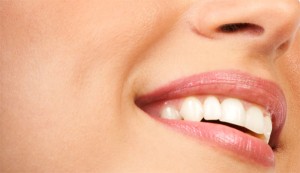 Dimples are cute little identations on a person’s cheeks. They show whenever a person smiles. Dimples are an irregularity in either the facial muscles called the zygomaticus major or the buccinator muscle. They are two of the major muscles exercised when a person smiles.
Dimples are cute little identations on a person’s cheeks. They show whenever a person smiles. Dimples are an irregularity in either the facial muscles called the zygomaticus major or the buccinator muscle. They are two of the major muscles exercised when a person smiles.
Many people, as well as a number of cultures, consider dimples attractive, and therefore an asset to one’s appearance. They also enhance a person’s smile. Unfortunately, not all people are bestowed with the gift of dimples as they only come through genetic inheritance. So if it does not come naturally, never worry! The powers-that-be in the world of cosmetics have come up with Dimple Creation for those who would like to have a cute pair.
How the procedure goes
To explain the procedure, it would be helpful if the natural way of how dimples occur is further explained. As mentioned earlier, the formation of dimples has something to do with the facial muscles that move whenever a person smiles. This muscle is connected to the facial skin by a connective tissue; meaning the skin is naturally stuck to the zygomaticus major or the buccinator muscle. So whenever, this muscle moves due to a smile, it pulls in the facial skin with it. This creates the indentations we call dimples.
Now, the whole business of cosmetically creating dimples is just as simple. The goal of this procedure is to attach the skin to the buccinator muscle, just as it should be in the case of a person who naturally has dimples.
During the procedure, the doctor will make a tiny incision inside the patient’s cheek. Through this incision, a soluble suture is inserted. This suture then catches the underlying surface of the facial skin. Crudely and simply put: the skin is sewn to the muscle. Where connective tissues would be in the case of a person who has natural dimples, there are sutures in the case of cosmetic dimple creation. Not to worry though, this incision does not leave a scar on the outer surface of the facial skin. As the wound created by the sutures heal, the scar will permanently attach the skin’s underlying surface and the buccinator muscle. And this will permanently install dimples on the patient’s face even after the sutures have healed.
Dimple creation, being a fairly simple procedure, takes only 20 to 30 minutes to finish and the patient may leave right away afterward. Only a local anesthetic is used in the operation, and it can be done right in the doctor’s office. The patient is prescribed some antibiotics to be taken for a couple of days after the surgery.
Any disadvantages?
The patient may experience some swelling and bruising after having their dimples created. Also, the dimples will be visible even when the patient is not smiling for a few days or weeks following the procedure. But this will straighten itself out as the sutures heal. Other than that, Dimple creation is is very safe and highly effective for adding some extra jazz to a person’s smile!
[hcshort id=”5″]
